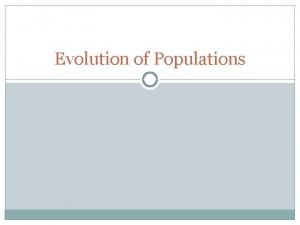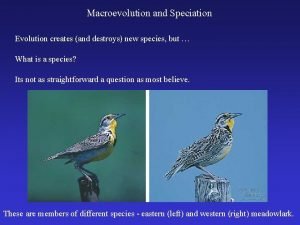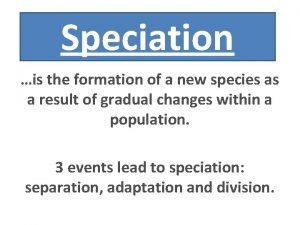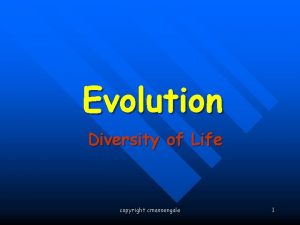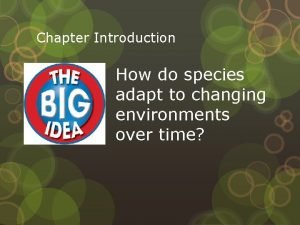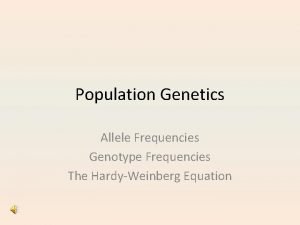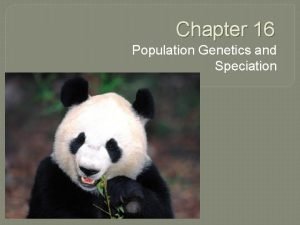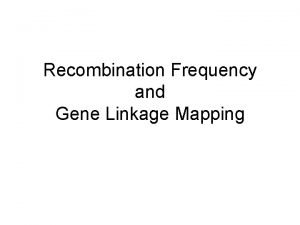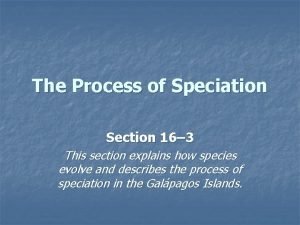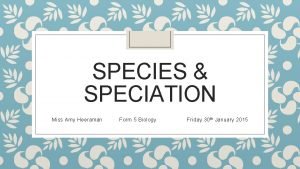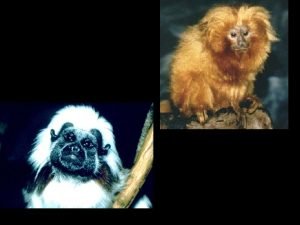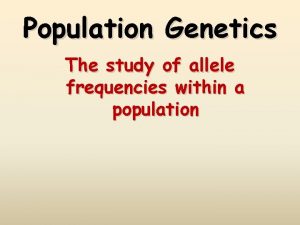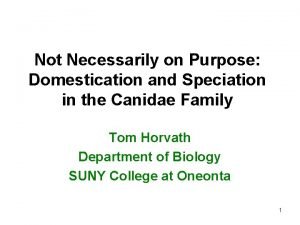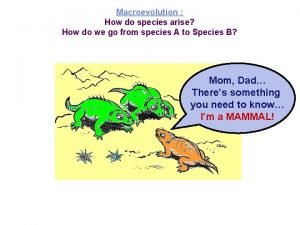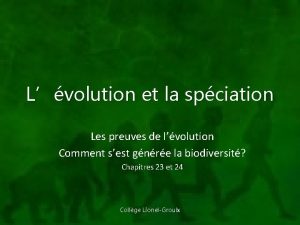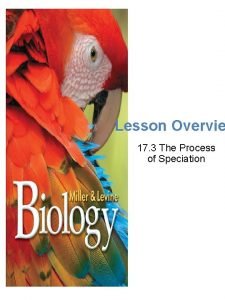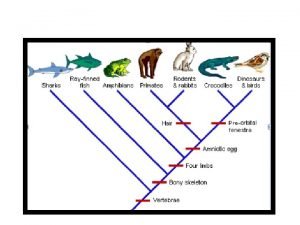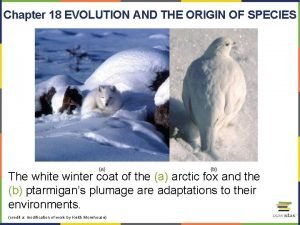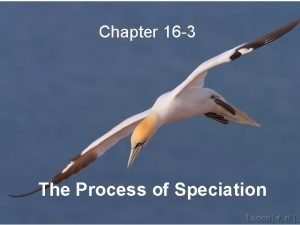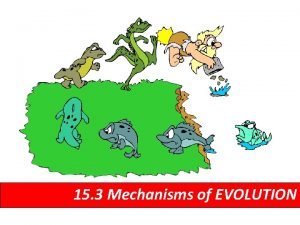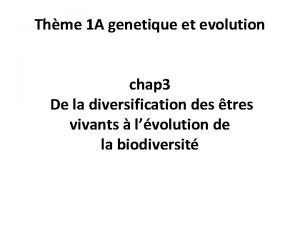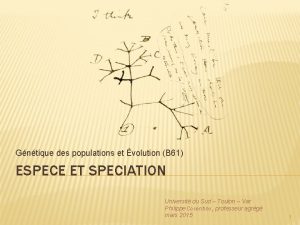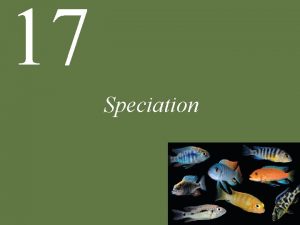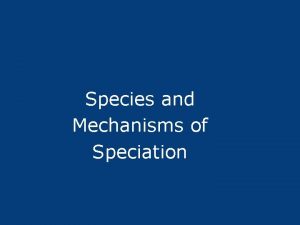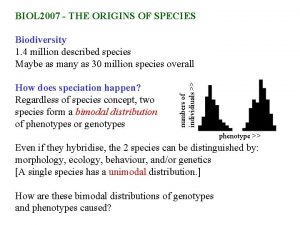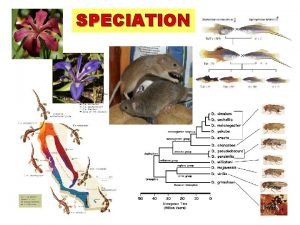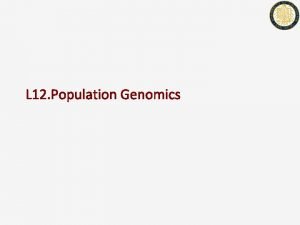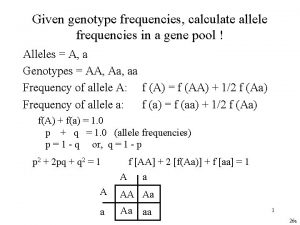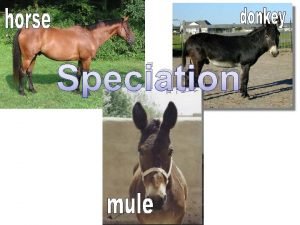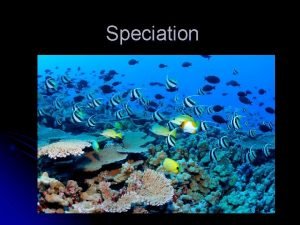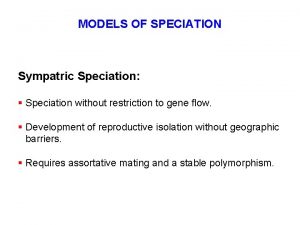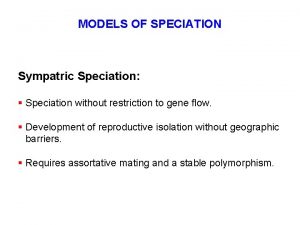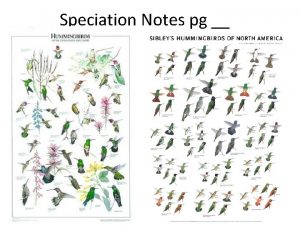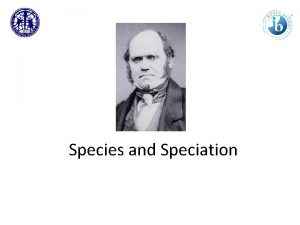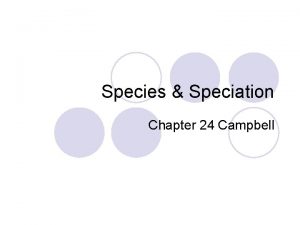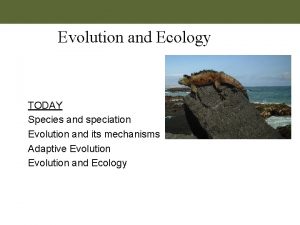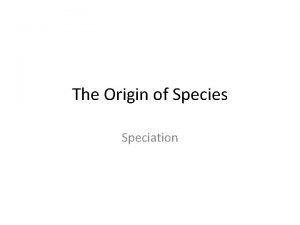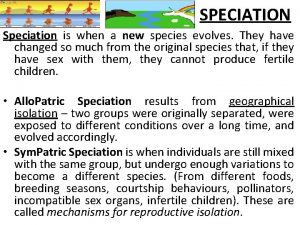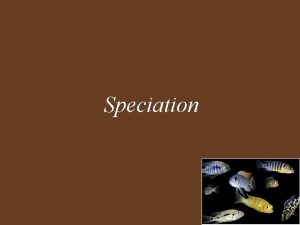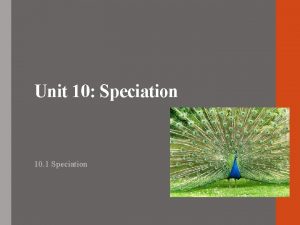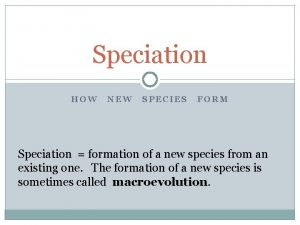D 2 Species and Speciation Evolution Allele Frequencies



















































- Slides: 51

D. 2 Species and Speciation Evolution

Allele Frequencies and Gene Pools Evolution is the result of changes in the allele frequency in a population’s gene pool over a number of generations. The gene pool is all of the alleles present in the reproducing members of a population at a given time. ▪ A population is organisms of the same species in the same area that are interbreeding.


The allele frequency is a measure of the proportion of a specific variation of a gene or allele in a population. Ex) 50% A 1 Alleles 50% A 2 Alleles

Not to be confused with GENOTYPES: 33. 3% are homozygous for A 1 33. 3% are heterozygous 33. 3% are homozygous for A 2

Evolution and Alleles Gene pools are relatively stable over time BUT New alleles can be introduced by mutations or the immigration of new members from a different population of the same species or old alleles can be removed when the final organism possessing this trait dies out or emigrates and leaves the population.

After many generations of NATURAL SELECTION some alleles are more advantageous and become more frequent in the population while other alleles are selected against and decrease in frequency. If there is no change in the allele frequencies of a gene pool then there is NO EVOLUTION.

Hardy Weinberg

Species A species is made up of organisms which: Have similar physiological and morphological characteristics that can be observed and measured. Have the ability to interbreed and produce fertile offspring. Are genetically distinct from other species. Have common phylogeny (evolutionary relatedness)

Hybrids Members of separate but similar species reproduce and produce offspring. The majority of offspring are infertile producing a genetic barrier between species.

Just Kidding! ZORSES (Are real!!!)

Polyploidy refers to the situation in which a cell contains three or more sets of chromosomes. (3 n, 4 n …etc) This occurs when cell division does not completely separate the copies of chromosomes into distinct nuclei and they end up in the same cell.

Polyploidy occur more commonly in PLANTS. ▪ The extra chromosomes makes plants produce large fruits or food storage organs (grains), make them heartier, more resistant to disease and can also be seedless (uneven number of chromosomes). At A the strawberry plant is exposed to a chemical called colchicines. At B due to the effect of colchicines, total non-disjunction at meiosis produces diploid gametes (2 n). As a result, at C two diploid gametes fuse at fertilisation. Finally at D a new plant develops which has four sets of chromosomes (4 n)

If members of the same species develop different numbers of sets of chromosomes they may not be able to interbreed forming new species. http: //kisdwebs. katyisd. org/campuses/MRHS/teacherweb/ hallk/Teacher%20 Documents/ AP%20 Biology%20 Materials/Evolution/Speciation%20 by%20 Changes%20 in%20 Ploidy/25_A 02 s. swf

Other Barriers Between Gene Pools Populations of members of the same species in the same gene pool can be stopped from reproducing due to barriers.

GEOGRAPHIC ISOLATION: Physical barrier such as land or water formations prevent males and females from finding each other making interbreeding impossible. The Kaibab squirrel (Sciurus aberti kaibabensis ) (left) is only found on the Kaibab Plateau north of the Grand Canyon, while the related Albert’s squirrel (Sciurus aberti ) (right) is found on the south rim of the Grand Canyon.

The populations of Tamarin monkeys are separated on the sides of the Amazon River. Where the river tributary is wide and individuals on opposite banks do not interbreed, the populations are diverging toward separate species. Where the river tributary is narrow, the individuals still interbreed.

When a new species forms from an existing species because it is separated by a physical barrier it is called ALLOPATRIC SPECIATION.

When a new species arises from an existing species while living in the same geographical area it is called SYMPATRIC SPECIATION. What could cause this?


Allopatric vs. Sympatric Speciation

TEMPORAL ISOLATION Incompatibility of the time frames which prevent populations or their gametes from encountering each other. Different rates of maturing of female and male parts of flowers. Different hibernation patterns. Different mating seasons.

BEHAVIORAL ISOLATION One population’s lifestyle and habits are not compatible to with those of another population. Courtship behavior Attractiveness. Hormone scents change.

Adaptive Radiation Adaptive radiation occurs when many similar but distinct species evolve relatively rapidly from a single (or small number of original) species. Variations within a population all certain members to exploit a slightly different niche.

Darwin’s Finches Adaptive radiation is one example of divergent evolution

Divergent and Convergent Evolution Divergent evolution is the process of two or more related species becoming more and more dissimilar. (as in Adaptive Radiation) Red Fox Kit Fox

RED FOX lives in mixed farmlands and forests KIT FOX its red color helps it blend in lives on the plains and in the deserts its sandy color helps conceal it with surrounding trees from prey and predators Large ears are an adaptation to its desert environment. The enlarged surface area of its ears helps the fox get rid of excess body heat q Similarities in structure indicate that the red fox and the kit fox had a common ancestor. q As they adapted to different environments, the appearance of the two species diverged.

Convergent evolution occurs in unrelated species that become more and more similar in appearance as they adapt to the same kind of environment.

CACTUS and EUPHORBIA Two unrelated plants that have adapted to desert areas CACTUS . EUPHORBIA

Cactus grows in the American desert while the euphorbia grows in the African deserts. Both have fleshy stems with spines. ▪ Spines help to reduce surface are. ▪ Stems are the now the location of photosynthesis and store water (succulent). Both plants grow in upright columns to reduce horizontal exposure to the sun.


Gradualism and Punctuated Equilibrium

GRADUALISM PUNCTUATED EQUILIBRIUM Changes are relatively quick often in response to a sudden change in the environment. Some species go extinct others adapt to their new surroundings This allows organisms to occupy niches that have been left open. Ex) Volcanic eruption, climate change, or a meteorite Is followed by long periods of little or no change. (possibly incomplete fossil record) Changes are small, continuous and slow. Darwin argued that the fossil record shows a succession of small changes in species showing that speciation is a steady, ongoing process with transitional stages.

Transient Polymorphism Different versions of a species are referred to as POLYMORPHISMS (many shapes). Peppered Moths:

Depending on the environment either variation of the peppered moth can be selected for or against. (Industrialization vs cleaner environment)

Balanced Polymorphism When two or more alleles within a population are not transient and changing but stabilized by natural selection, this process is called BALANCED POLYMORPHISM. Example) ▪ Sickle Cell Trait (Heterozygote Advantage)

Compare the frequency distribution of sickle allele Heterozygote Advantage: The individual that is HETEROZYGOTE for Sickle Cell Trait has a GREATER FITNESS in areas with Maleria then an individual that is HOMOZYGOUS for NORMAL OR Si. CKLE CELL ANEMIA. • Compare the frequency distribution of sickle allele with the distribution of malaria In these regions sickle cell trait ( Hb. AHbs ) are resistant to the malaria parasite. This is because the Hbs allele makes it difficult for the parasite to live inside the red cells. Sickle cell trait (carriers) therefore survive malaria infection. • Hb. A normal hemoglobin people are susceptible to malaria infection and do not survive well. • Hbs have sickle disease and do not survive well.

World Sickle Allele Distribution: Compare the frequency distribution of sickle allele with the distribution of malaria. • The sickle allele survives well in malaria regions accounting for its high frequency in these regions. • With migration the allele has spread around the world. Notice that the high frequency of sickle coincides with malaria regions

Sickle Cell Trait – makes both normal and sickle shaped RBC

Phenotypes Sickle cell trait Genotypes Gametes x Sickle cell trait Hb. NHb. S Hb. N Offspring Proportions Hb. S Hb. NHb. SHb. S Normal Sickle cell trait Sickle cell anaemia 25% 50% 25%




Genetic Drift







 Allele frequencies
Allele frequencies Sympatric speciation vs allopatric speciation
Sympatric speciation vs allopatric speciation Speciation or the formation of new species is
Speciation or the formation of new species is Keystone species definition biology
Keystone species definition biology Geographic distribution of species evolution
Geographic distribution of species evolution Evolution of species 2
Evolution of species 2 Allelic frequencies
Allelic frequencies Frs and gmrs frequencies
Frs and gmrs frequencies What is joint relative frequency
What is joint relative frequency Population genetics and speciation worksheet answer key
Population genetics and speciation worksheet answer key 2 way relative frequency table
2 way relative frequency table Jt6m frequencies
Jt6m frequencies Conditional relative frequency
Conditional relative frequency Conditional relative frequency example
Conditional relative frequency example What are joint relative frequencies
What are joint relative frequencies Shares radio frequencies
Shares radio frequencies Frequency of recombination
Frequency of recombination How to calculate marginal relative frequency
How to calculate marginal relative frequency A piano emits frequencies that range
A piano emits frequencies that range Call sign examples
Call sign examples Hf acars frequencies
Hf acars frequencies Formant frequencies
Formant frequencies Physics is phun
Physics is phun Hf beacon frequencies
Hf beacon frequencies Formant frequencies
Formant frequencies Moon bounce frequencies
Moon bounce frequencies Formant frequencies
Formant frequencies Civil air patrol frequencies
Civil air patrol frequencies Poligon de frequencies
Poligon de frequencies Emr spectrum wavelengths
Emr spectrum wavelengths Lily evans potter
Lily evans potter Section 16-3 the process of speciation
Section 16-3 the process of speciation Speciation
Speciation How does speciation occur
How does speciation occur Allopatric speciation example
Allopatric speciation example Factors affecting gene frequency slideshare
Factors affecting gene frequency slideshare Fox cladogram
Fox cladogram Types of speciation
Types of speciation La spéciation
La spéciation Steps of speciation
Steps of speciation Sympatric speciation def
Sympatric speciation def Ecological speciation
Ecological speciation The origin of species - chapter 18 bl
The origin of species - chapter 18 bl Section 16–3 the process of speciation
Section 16–3 the process of speciation Parapatric speciation
Parapatric speciation Lecointre
Lecointre Scala naturae
Scala naturae Embryo development
Embryo development Speciation
Speciation Sympatric speciation
Sympatric speciation Parapatric speciation
Parapatric speciation Ring species
Ring species
